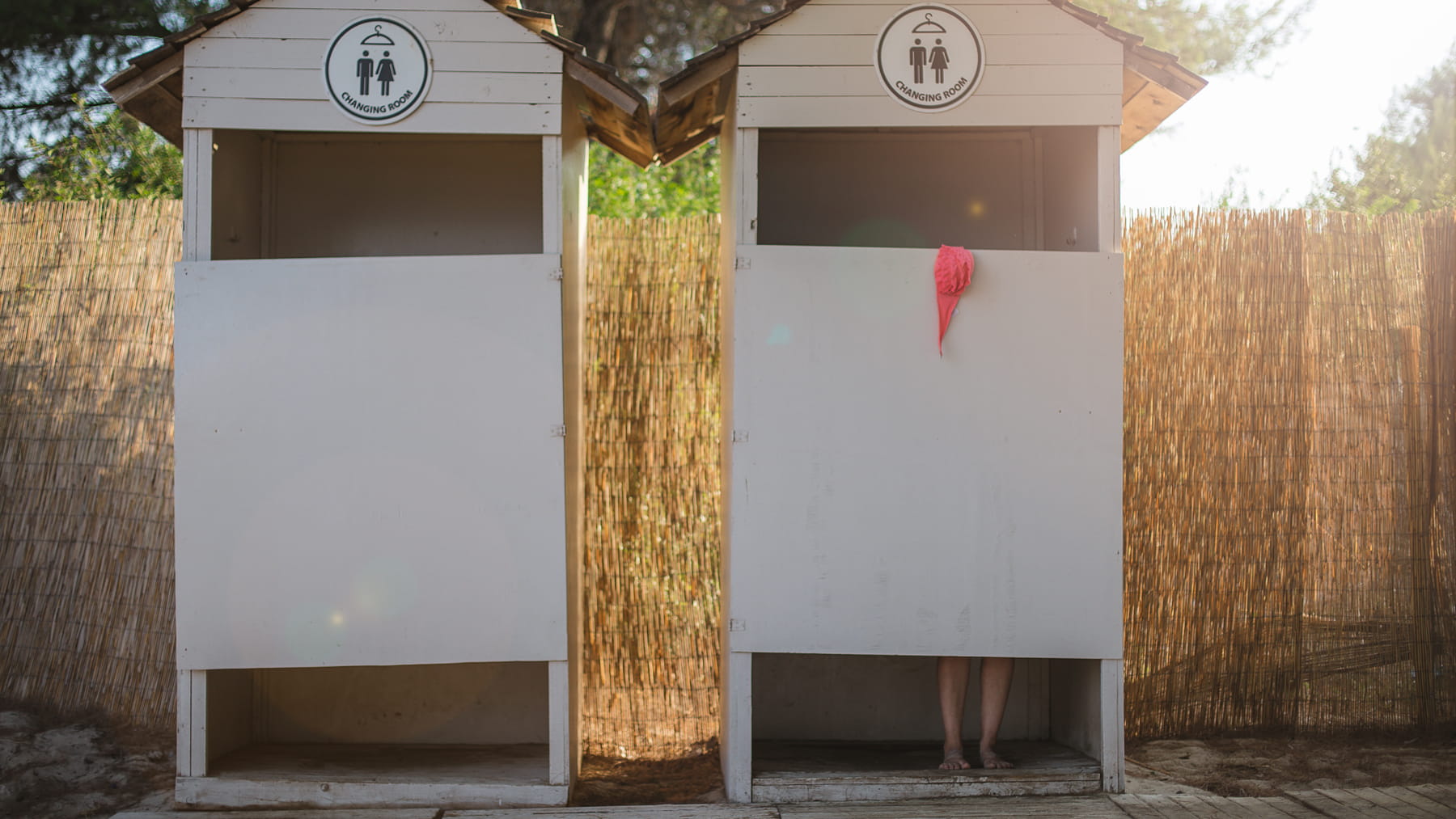Here’s why it’s a good idea to wear flip-flops at public showers

I used to get a chuckle when I’d visit the gym and see an older gentleman in the locker room blow drying his feet and the spaces in between his toes with a hairdryer.
Now, as a dermatologist who examines daily cases of foot fungus, warts and jock itch, I know his actions were anything but funny. Locker rooms and other public spaces with high barefoot traffic, including pools and saunas, are ripe for acquiring cutaneous infections, or infections of the skin that can be caused by funguses, viruses and bacteria.
Keeping your feet clean and dry is the key to protecting yourself from acquiring these common infections.
And, in some cases, such as foot fungus, it’s a lot easier to steer clear of the infection than get rid of it.
One easy way to do just that is to not walk barefoot through public locker rooms and bathrooms. Instead, wear shoes, sandals or flip-flops. Remember, though, to keep sandals dry and clean and sanitize them often, because bacteria also can thrive on porous services like flip-flops, wooden shoes and even pool noodles, but that’s another topic.
Locker rooms and public pools are high barefoot traffic areas, which make them great places for picking up germs through exposed skin. That’s because they’re chock full of people shedding skin and viruses. They’re also the perfect conditions for growing bacteria, which prefer warm and wet environments.
While you expose your bare skin to these conditions, you’re putting yourself at risk.
Let’s look at four types of skin infections and methods of treatment.
Fungal infections
Fungal infections, such as athlete’s foot, can be passed from person to person or acquired from the environment. Typically they hang out on gym shower floors, and they thrive in wet and warm environments. The longer that your feet remain wet and hot and not dry, the more likely that the fungus proliferates.
Those who keep their feet covered for a long time are particularly at risk. That means athletes who are constantly sweating, or workers who are in construction-style boots all day. The fungus spreads between toes and on the sides of feet. It can cause a lot of itch, pain and scaling. And, after it’s been on your feet for a long time, it can pass from in between your toes to your toenail.
It can spread even further to the groin forming jock itch, often caused when underwear is pulled on from the ground up, dragging the fungus from the feet to the genitals. There’s a lot of consistency with what you find on the feet and what you find on the groin.
Treatments for fungal infections include antifungal medications and topical ointments and sprays.
Viral infections
A good example of a viral infection is the wart, and the virus is everywhere. There are so many kinds of warts: common, flat warts, genital warts – all caused by the HPV virus. It’s a virus that lives in the top layer of your skin. You shed the virus slowly over time, often with or without having active warts. The virus loves to leave our skin and shed.
When you’re in public spaces at the pool or beach, many people are shedding the virus. You’re more likely to pick up those viruses in areas of weakness like your hands and feet that are in contact with fomites, inanimate objects that acquire and hold viruses and bacteria that you can later get.
Molluscum is another virus that’s more common in kids and easily spread by touch. It takes the form of bumps that dip down in the center, like tiny donuts and can be widespread in immunocompromised people. They love wet objects such as towels, pool noodles and rubber duckies. Kids can be covered in them, but once the virus is cleared, it usually never comes back.
Treatments for viral infections often include removal by freezing or scrapping, medications and topical creams.
Bacterial infections
Staphylococcus – or “staph” – is a group of bacteria capable of causing bodily infection. Staph is normally present in the nose and on the skin of about 30 percent of healthy adults and causes no harm. But an exposed opening in the skin may allow the bacteria to penetrate the skin’s natural barriers and cause an infection.
Staph is transmitted by direct or indirect contact with someone who has an active staph infection, and that can happen even in showers. Shared gym equipment such as free weights, benches and workout machines can harbor the bacteria and spread infection from person to person. You can acquire folliculitis, abscesses or even serious internal infections. Treatment usually involves antibiotics. In rare cases, the staph bacteria can enter the bloodstream and spread to other organs, causing more serious complications.
Besides steering clear of these areas, here are some other ways to limit your exposure to foot infections of all kinds:
- Take an immediate, quick shower after working out or swimming. Wash your feet with soap and water.
- Dry your feet with a clean towel. Be sure to dry the spaces between your toes. Blow-dry your feet with a hairdryer.
- Wear clean socks every time you put your shoes on and wear shoes as much as possible. Since fungus can live in your shoes, change them often, and don’t just wear the same pair of sneakers or work boots.
John Christopher Trinidad, MD, is a dermatologist at The Ohio State University Wexner Medical Center, and an assistant professor in the Division of Dermatology.




